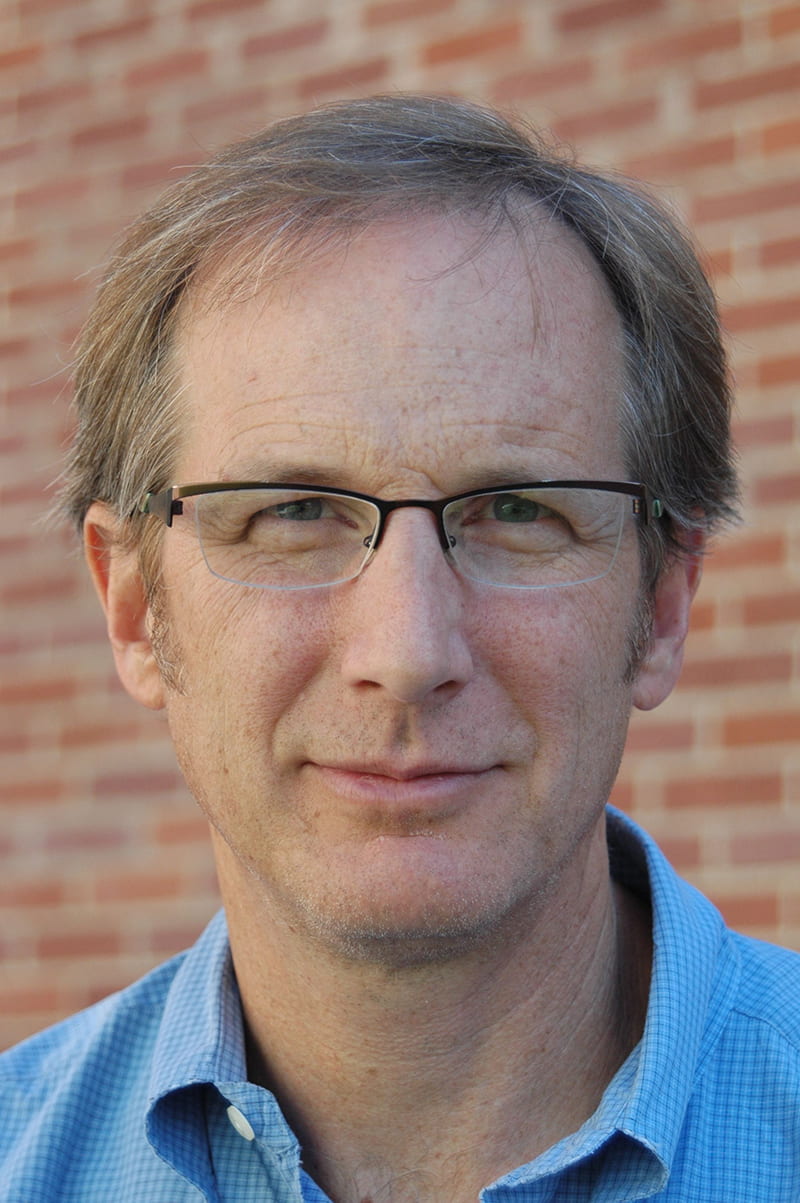
David Gere
Gere studied music, dance, and Tamil in Madurai, Tamilnadu from 1980-82, and returned to India in 2004 on a Fulbright grant to study how artists worked to stop the AIDS epidemic there. He earned his bachelor’s degree in religion from Oberlin College, his master’s degree in ethnomusicology from the University of Hawaii, and his doctorate in dance history and theory from the University of California, Riverside.
According to the AIDS.gov website, in 2015 there were 36.7 million people living with HIV worldwide – a number equivalent to the current population of California. As troubling as that statistic is, there’s a more disturbing one on the Foundation for AIDS Research website: for that same year, approximately 5,700 persons were added daily.
While no cure exists yet for persons who have the human immunodeficiency virus, or HIV, medical research continues to make progress in developing anti-retroviral regimens (ARVs) that can dramatically slow the disease’s progress, as well as prevent secondary infections and complications.
This is good news for those who are already HIV positive, but with thousands being added to the ranks each year, some activists have turned to unconventional methods to help stop the spread.
Activists such as the educator, arts critic, and curator David Gere, who had lost many friends to the insidious disease and who had witnessed his community of San Francisco being ravaged by the pandemic. After studying the problem, Gere concluded there were three main reasons for the continuing spread of HIV/AIDS: widespread stigma, extreme social inequality, and limited access to lifesaving medication. He decided to use his abundant creative abilities to address these issues.
Gere’s presentation, “Can Art Save Lives?” which will be held at 6:30 p.m. Wednesday, April 12 in Whitaker Hall Auditorium, will touch on the ways he uses creative approaches to turn his passion (and compassion) into action.
Gere directs the Art & Global Health Center at the University of California – Los Angeles (UCLA) and is a professor in the Department of World Arts and Cultures/Dance, where he teaches courses in arts activism. With like-minded collaborators, he has launched a number of projects that demonstrate how art can serve as a powerful agent of change.
In the visual art world, Gere has co-curated a trilogy of AIDS exhibitions: MAKE ART/STOP AIDS (2008), The A.R.T. Show (2011), and Through Positive Eyes (2016), which is touring South Africa through 2018.
“Through Positive Eyes” is a collaboration with the photographer Gideon Mendel and is based on the belief that challenging the stigma against people living with HIV/AIDS is an effective method for stopping its spread, and that art is a powerful medium to deliver the message. HIV-positive people in six countries have participated in this unique initiative that equips persons with cameras so they can document their own lived experiences. These photo essays, found here http://throughpositiveeyes.org/ tell poignant and powerful stories, and connect the image taker and viewer on a personal level.
Gere’s book, How to Make Dances in an Epidemic: Tracking Choreography in the Age of AIDS (2004) received the Outstanding Publication Award from the Congress on Research in Dance. In addition, Gere has contributed to a number of scholarly publications relating to dance, as well as articles within the discipline of public health, seeking to establish the efficacy of arts-based health interventions.
Gere studied music, dance, and Tamil in Madurai, Tamilnadu from 1980-82, and returned to India in 2004 on a Fulbright grant to study how artists worked to stop the AIDS epidemic there. He earned his bachelor’s degree in religion from Oberlin College, his master’s degree in ethnomusicology from the University of Hawaii, and his doctorate in dance history and theory from the University of California, Riverside.
For more on David: http://research.universityofcalifornia.edu/profiles/2011/08/david-gere.html
Listen to David’s TEDx talk: https://www.youtube.com/watch?v=V3Cd7NzDZaE